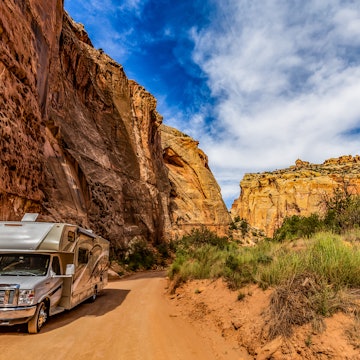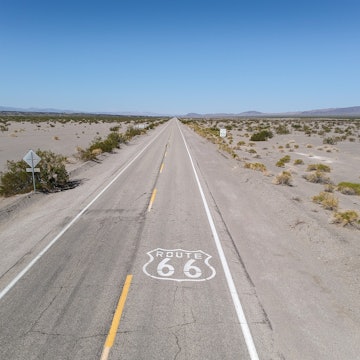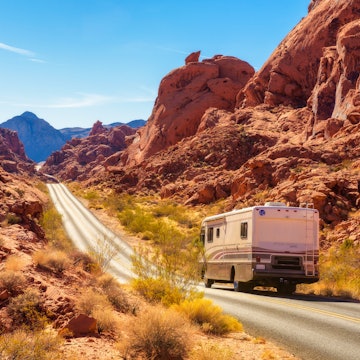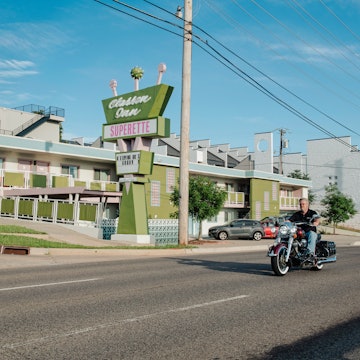

Crossing the 'Main Event' along Telluride's via ferrata, Italian for "iron road", roughly 500 feet above the forest floor below © Chip Kalback / Lonely Planet
Studded with sawtooth horizons, quirky mountain towns and fascinating stories of the area's earliest inhabitants, Southwestern Colorado beckons adventurers and explorers.
Begin your journey in one of the capital’s coolest neighborhoods, and then head south into the mountain-fringed town of Telluride. Next, descend into the gold and silver mines that put this region on the map before discovering the mysteries of the people who lived in the awe-inspiring cliff dwellings of Mesa Verde Country.

This article appeared in the November 2018 issue of Lonely Planet magazine’s UK edition.
Denver
Explore the city’s diversity in one of its newest neighborhoods.
It’s peak rush hour at Union Station in downtown Denver and the place is packed. A family of three weaves through the crowd, dragging rolling suitcases with a tick-tock cadence as they pass the after-work-drinks crowd at Terminal Bar. The station’s high, arched ceiling fuses the bustle into an energetic hum. Once nearly another casualty to America’s reliance on the automobile, Union Station underwent a major renovation in 2012 and now it’s the city’s beating urban heart – where spouses stop to buy flowers on the way home or travelers look for reading material at the Tattered Cover.
Just one stop on the A-Line north, Denver’s latest phase of redevelopment is taking shape. At Zeppelin Station, a food hall and work space in the River North district – commonly known as RiNo – a man wraps his hands around a massive banh mi, nodding to the beat in the headphones in his ears; elsewhere, a business meeting is conducted over cocktails and pints of beer. The train trundles past, stirring up dust from an empty lot nearby. Justin Anderson, director of hospitality for the newly opened space, looks through the wide, garage-style doors that frame views of downtown against a hazy backdrop of the Front Range mountains. A thick black beard shrouds his chin. ‘A lot of people thought that RiNo was rough-and-tumble and it was 10 years ago,’ he says, ‘but with all the development and everything happening here, it’s one of the fastest-growing neighborhoods in the nation.’

Zeppelin Station reflects the neighborhood’s industrial heritage: corrugated metal encases the exterior and high ceilings hang over concrete floors. To a large extent, it’s also a reflection of Denver, a hodgepodge of influences from around the world. Food runs the international gamut: bibimbap bowls from Injoi Korean Kitchen, chana masala from Namkeen, and Montreal smoked meats and poutine from Au Feu.
‘Denver’s a city of transplants,’ says Kyle Zeppelin, the real-estate developer behind the Source, an iron foundry-turned-food hall, as well as (you guessed it) Zeppelin Station. ‘With all those outsiders, there’s an openness to trying new things.’ Behind him, graffiti colors the brick wall, a design element Kyle is quick to point out was kept from when the space was an abandoned building.
Just over the South Platte River, a small lunch and catering business is trying something new. It’s lunchtime at Comal Heritage Food Incubator, and patrons eat on a patio festooned with picnic tables and planters of tomatoes and herbs. Comal trains women from Denver’s large immigrant community to work in the food service industry, dishing up cuisines from their home countries. Inside, over a plate of Syrian-style roast chicken, program founder Slavica Park says the initiative also connects people. ‘Food is one of those things that just brings everybody together,’ Slavica says. ‘It unites everybody. It breaks down all barriers.’

As afternoon turns to dusk, the streetlights tick on, bathing the roads in a warm, orange glow. Traffic, ever present during the day, lightens to just a few cars. A construction crew building a new block of apartments packs up and goes home. The city seems to gather in its bars and restaurants: patios throng with the roar of drinkers and lines gather outside the hottest new openings. To the west, the peaks of the Front Range appear like a gateway to the frontier, the setting sun backlighting the mountains in pink hues, as if there’s something new just over the horizon.
Where to stay: The Ramble Hotel is a 50-room boutique hotel in the heart of RiNo. A warehouse design motif reflects the area’s industrial heritage, with concrete columns and tall, pane-glass windows framed by brick walls. New York’s famed cocktail bar Death & Co has a 20-seat branch here next to the lobby.

Telluride
Head south into the high San Juan Mountains, where the Old West meets new adventures
The warm, thin air is slightly pungent with the scent of marijuana. Old West façades cast shadows over streetside racks tangled with mountain bikes and cruisers. Above them, the red, white and blue of an American flag flutters gently in the breeze. In the center lane of Colorado Ave, which cuts a line straight through the center of town, a series of flower boxes provide an unofficial slalom course for a teenager on a skateboard. A pair of women in bright yoga pants pass the cinnamon bricks of the courthouse, mats slung over their shoulders. Notably absent is any chain store, their settlement restricted by stringent building codes, and their lack lends a timeless Wild West appeal.
Confined by a box canyon on three sides, Telluride is, necessarily, small – 20 minutes is all it takes to stroll its length of colorful Victorian buildings – but you sense that’s the way the locals like it. ‘Everybody knows everybody here in Telluride,’ says Ashley Boling, his head shaded by a light-brown cowboy hat. Ashley is a Telluride jack-of-all-trades, at once a radio host, festival emcee and local historian for this town of 2,400.

Pausing to say hello to people he recognizes, Ashley tells the competing stories of how Telluride got its name. The first is from tellurium, a mineral known to be an indication that gold is buried nearby. It’s a nod to the town’s history as a mining outpost, albeit a slightly mistaken one: gold wasn’t common in the valley. The second story says the word comes from the phrase ‘to hell you ride’, supposedly a warning to anyone about to take the treacherous, month-long journey to the town high in the San Juan Mountains.
Whatever the origin of its name, that hopeful sense of adventure still surges through the streets of Telluride’s downtown, even if the trip here is much, much easier these days. With a balanced assortment of ski terrain and the country’s highest concentration of ‘Fourteeners’ (mountains exceeding 14,000 feet in elevation), the ski season is the main draw to Telluride. But off-season visitors can get a taste of the mountains’ adrenaline-triggering activities – without the expense, equipment and skill needed for winter sports.
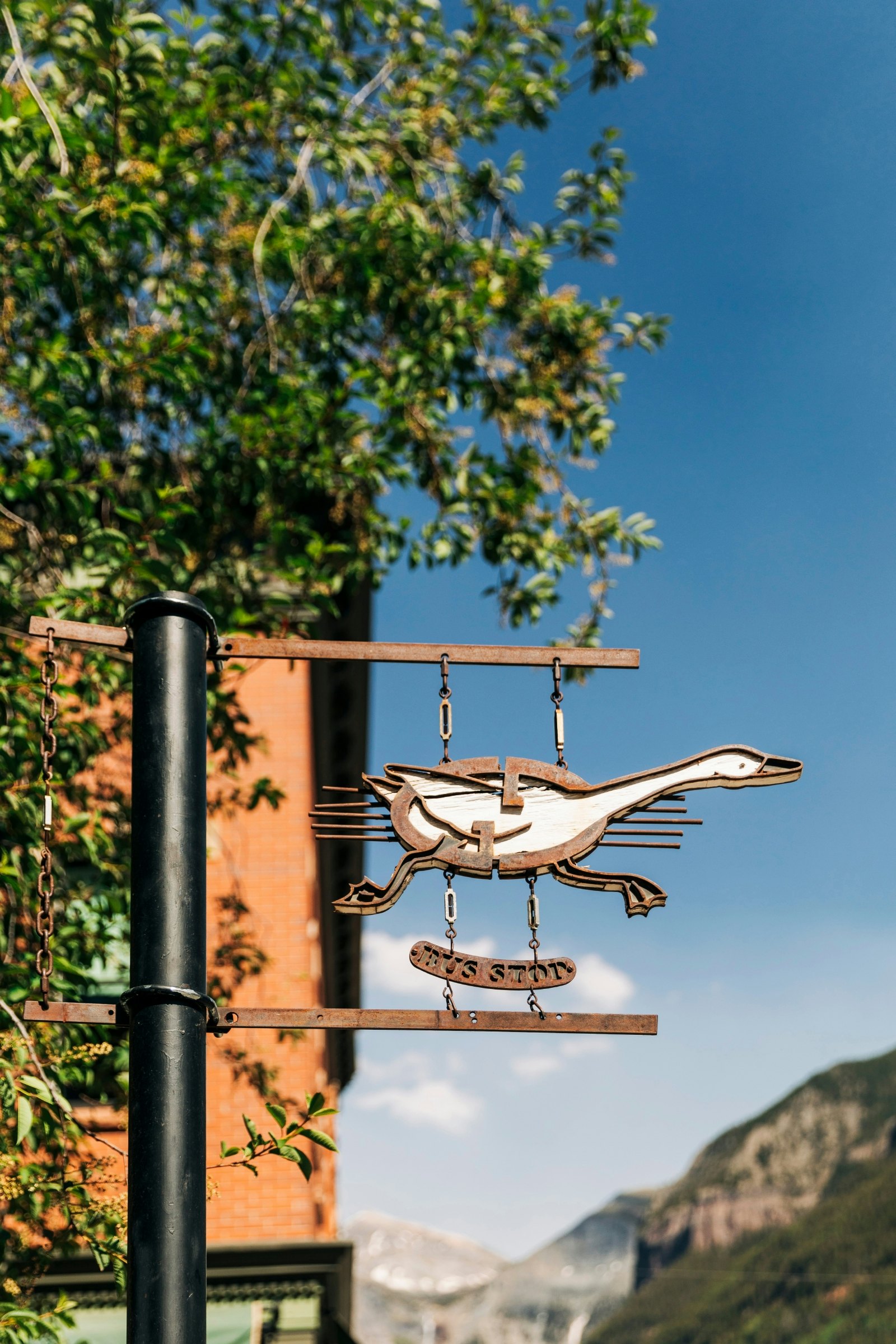
High up on a trail carved into the wall of the box canyon, Todd Rutledge, of Mountain Trip, leads the way around a bend in the path, careful to point out obstacles like tree roots and rocks. Periodically, as the path disappears into cliffside crevices, Todd nimbly traverses iron bars that have been drilled into the igneous rock. Less than an inch thick, the U-shaped rungs appear barely strong enough to hold an adult, but for Todd, that’s part of the allure. ‘We get teachers, bankers, everyone,’ he says, shimmying across. ‘Usually, there’s one person in a group who is adventurous and everyone else is humoring them.’
Via ferrata – Italian for ‘iron way’ – was developed by Italian troops scrambling over the Dolomites during World War I. The Telluride route was installed by a local rock climber in 2007, but for almost a decade it wasn’t sanctioned by the US Forest Service, which manages the land. In spite of this, it was a popular route among locals and in-the-know visitors eager for the hit of adrenaline that accompanies dangling off the side of a cliff.
Todd rounds another bend in the cliff rock, looking back over his shoulder to announce the Main Event, a 100ft-long section of the route suspended over triple that of vertical air. The rungs are spaced about three feet apart, with upper and lower rungs for hand and foot holds. ‘Our lives are so managed, Todd says. 'This gives people an opportunity to step right across their comfort zone.' A webbing of harness and ropes connect him to a cable running the length of the route.

The feeling out on the rungs is one of pure terror. A primal focus narrows one’s vision into the barest of inputs: the next rung, hands, feet. For those lucky enough to remember the axiom ‘Don’t look down’, the unfathomable void of empty space below is a vague but persistent threat. The midway point comes without relief – now you’ve gone too far to turn back, but you’re nowhere near finished. Sweat lubricates your grip. ‘Breathe,’ Todd says, which is surprisingly useful advice. In the distance, across the canyon, 360ft Bridal Veil Falls pours water into the air in a thin, wispy curtain, providing a brief distraction from the matter at hand.
Where to stay: Right on the edge of town, Hotel Telluride is decked out like a true mountain lodge – antler chandeliers, wood ceilings and mountain views. Free bikes for guests make jaunts to the cafés and shops on Colorado Ave a breeze.
La Plata Canyon
Unearth a rich history, where fortunes are made with a shovel and a pickaxe
In a grassy spot between aspen trees just outside Durango, a man named ‘Colorado’ stands among tables of rocks. A belt clasped with a buckle of bone, silver and lapis lazuli cinches a pair of Levi’s jeans around his waist. Nearby, magnets pin a sign reading ‘We Dig the Rocks’ to a rusted van. Stones of every type litter the tables, loosely arrayed by type: fossils the size of forearms, tiny stones like pink chunks of ice, obsidian the shade of night. Another sign, this one wooden and hand painted, reads, ‘Rocks for Sale’.
The man’s name is, in fact, Bob Ross. A nickname stuck after he’d spent time in Arizona and became ‘Colorado Bob’, but to most, it’s just Bob. He owns the Bessie G Mine in La Plata Canyon, a pine-covered valley pockmarked with old mines. Gold was discovered in the San Juan Mountains north of Durango in 1861, sparking a minor gold rush, but most operations dried up in the early 1900s. However, the precious metal still lingers in the ground of La Plata Canyon.
Tommy Barnes drives a black SUV up an unpaved road into the canyon. Tires crunch over rocks and marmots squeal in the distance. Bob counts himself as one of the lucky ones. Out of every hundred people who try, only two find gold, Bob says. How much has he found? He pauses, a sense of politeness preventing him from indiscretion. ‘I’ve dug about 1,000 ounces of gold out of Bessie G,’ he says. At current prices, that’s US$1.2 million.

Bob runs mine tours to supplement the income he makes from digging into the mountains and selling off what he finds. Inside the mine, groundwater trickles through fissures in the rock and settles in ankle-high pools. Lit only by headlamps and flashlights, the blackness beyond the beams’ reach is deep, impenetrable. The air smells of clay and dirt. Miner Stacy Brown shines his light on a divot carved out of the mine wall. ‘That’s quartz,’ he says, pointing to a darkish vein of rock. ‘And that right there? That’s gold.’ It’s not quite polished bullion, but sure enough: under the dirt, tiny flecks of gold.
Although tools have improved, hardrock mining hasn’t changed much since the 1800s: dig into the side of a mountain, look at the rocks, watch out for cave-ins and depleted oxygen. Reminders of hopeful digging lie in the old mines that puncture the mountains, in collapsed and forgotten tunnels, and the rusted machinery used to crush and sort ore.

The industry is fading away from the region, the bonanzas dwindling to just a shovelful of precious stones plucked from the earth and set out on a table in the sun. Tommy says Bob is one of a kind – a diamond in the rough, as it were. ‘That’s one thing about Bob: he’s not selfish with his knowledge,’ Tommy says. ‘He wants to share it with people. The sad thing is that when he’s gone, that’s a lot of knowledge that’ll just disappear.’
Where to stay: The 132-year-old Strater Hotel is a step into Durango’s past, with gold-leafed ceilings, displays of antique shotguns and a rowdy saloon next door. Western writer Louis L’Amour used room 222 as his base of operations while writing his popular Sackett series of novels.
Mesa Verde Country
Discover the centuries-old remains of a people who thrived in the area and then mysteriously left it all behind
‘People were successful here for hundreds of years,’ says retired archaeologist Victoria Atkins. From the front seat of a bus that drives into the heart of Mesa Verde National Park, Victoria leads the 700 Years Tour, tracing the existence of a community called the Ancestral Pueblo people, who lived in the area until the 13th century. The earth is ragged with charred pinyon and juniper trees sticking out of the dry grass like gnarled bones. Save for a few mountains on the horizon, the land is flat and arid. Through the bus’s tinted windows, the landscape seems hostile to any kind of human success.

Yet, 600 dwellings and thousands of other archaeological sites are scattered throughout Mesa Verde National Park, Victoria says. Among them is a network of structures built into sandstone cliffs that line the park. Cliff Palace is the largest such dwelling, a 150-room complex tucked into an alcove the length of a football field. A noon sun draws high over the alcove, and wind billows through the spruce trees in the canyon below. The structures’ dun-colored walls are the same hue as the rock that surrounds it, as if the hands of carvers, not masons, were responsible for the varied rooms and towers. But masons they were, laying sandstone bricks over a span of 80 years until, strangely, they left.
At the Mesa Verde National Park visitor center, Dan Simplicio quickly dispels the common misconception that the Ancestral Pueblo people simply vanished like a desert mirage. ‘Mesa Verde was a place of our ancestors,’ he says. ‘They didn’t disappear. I’m living proof.’ Dan is a member of the Zuni, a tribe of Native Americans that resides in New Mexico. When the Ancestral Pueblo people left Mesa Verde, they moved south, into what is now Arizona and New Mexico, and the Zuni is one of the tribes that are believed to be their descendants. ‘They were stopping place to place,’ Dan says. Prior to settling in Mesa Verde, Ancestral Puebloans came from the west; Mesa Verde was just a stop on their way. ‘They were searching for the center of where they wanted to be. It was a migration.’
Fifteen miles north of the national park, a team of volunteer archaeologists from Crow Canyon Archaeological Center unearth an old waste site, also called a midden, in the backyard of a small, white house. Four-foot-deep holes are carved out of the earth in precise squares and rectangles, piles of dirt nearby. Volunteers sift through the remains of the ancient trash heap, looking for clues.

John Smith, a psychologist from Louisiana, says he’s here because he’s interested in the human relationships between the people who built these structures. ‘You pick up a stone tool with a thumbprint in it. You hold it in your hand and you realize that these were real people,’ he says. ‘They were figuring out how to shelter and feed themselves, and work with other communities just like we are today.’ At his feet, among stones and dirt, shards of bowls and jars are scattered like discarded puzzle pieces.
Where to stay: Retro Inn is a quirky motor lodge in Cortez, Colorado. Each room has its own throwback theme, such as the Barbie room or the Moon Landing room. Lawn games, like horseshoes or a giant chess set, help pass the time on a grassy space nearby.
Alexander traveled to Colorado with support from Colorado Tourism. Lonely Planet contributors do not accept freebies in exchange for positive coverage.











